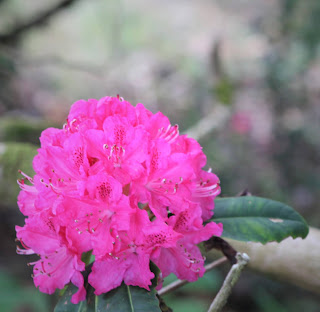Why, do we not use the same tools against the criminals?
When I say “we” I mean us as individuals AND our elected officials.
If something is sent to you, it is possible to trace where it came from. Most intrusions into networks occur in this fashion ie clicking on a link in an email.
What is normally done with unwanted emails, is we list them as spam and set our email programs up to block the senders ip address.
So if you don’t open the email because you don’t trust the sender, and block the senders ip then you are protected against this way of invading your space.
Thing is, the scam emails get more and more sophisticated every year ie they look like a legit email from your bank, with scammers even following up with phone calls etc. This really targets the older generation who may not be as savvy.
(Apart from me).
So instead of rubbing our hands that McAfee stopped 53 thousand risky connections and logged 1083 suspicious connection attempts on my computer alone, (which turn out to be mostly from my home network devices like an old ipad and a printer) and queuing up to pay them again for next years protection.
Why don’t we as a nation launch a DoS attack on the ip addresses that the criminals are using?
A DoS attack Denial of service is typically accomplished by flooding the targeted machine or resource with superfluous requests in an attempt to overload systems and prevent some or all legitimate requests from being fulfilled.
Probably the reason is that the global information security market is forecast to grow at a five-year CAGR of 8.5 % and reach $170.4 billion in 2022 according to GARTNER
As a nation of connected people we have a HUGE resource of computing power, think of your own situation there is probably a laptop or three an ipad or two and phones galore sitting doing nothing aprt from monitoring FaceBook ,each device is capable of sooooo much more. If all this power was used to thwart hackers they would not stand a chance.
Obviously the likes of companies like Norton and McAfee, (that we all pay out hundreds to every year to keep our computers and networks secure) would not be onboard in any way to try and kill off their golden goose. And probably, rather than do some graft the elected officials, we all trust so much would go to Security companies for advice and get the "cant be done, (I want to keep my goose)" answer but believe me all the kids out there designing apps, that will never make any money selling online, could be putting their brainpower into designing a program that could be installed on every device, sponsered by the Sate to beat the hackers, infact employ some hackers to beat the baddies.
The Antivirus goose egg collectors will have a vault the size of Western Europe full of data on where the most common types of malware including viruses, keyloggers, worms, trojans, ransomware / crypto-malware, logic bombs, bots/botnets, adware & spyware, and rootkits originate.
So what do we do? Launch a Dos attack or some other attack on the perpetrators, then do it again and again every day every new scam email gets a DoS attack.
Of course this couldn’t be done by us alone, without a bit of coaching anyway, but surely our Governments with our help and the brains of the younger generation could collect the required data and go into attack mode rather than whimper in a corner in catch up mode.













